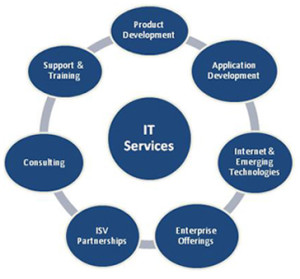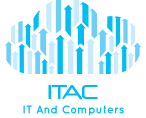Steps for Defining IT Services
May 5th, 2016
Most of ITSM projects usually fail to move forward due to the difficulty encountered when defining IT services. Many initiatives usually fail to succeed because they do not clearly define their edmonton it services. Failure to get this critical step right will automatically take all your ITSM initiatives down to drains.
In fact, ITIL service design, strategy, operation books and transition usually revolve around the idea of IT services. In addition, business service management (BSM), service portfolio management (SPM), IT service management (ITSM) and service level management (SLM) all need a clear service definition. The problem is, as much as these technology areas and books claim to be in a position to manage IT services, none actually defines the steps involved in defining a service. SID and eTOM have partnered and tried to define the process of defining your IT services. This has been outlined below:

Select a given enterprise product and identify the supporting services.
The enterprise product is usually the primary output that is actually sold to the consumers. Identify all the IT services that usually support this product’s delivery to the end consumers.
Create a list of all the related IT systems
This list of IT systems is not the hardware and software involved. Rather, this is a list of all the major applications that assist in selling, provision, servicing and supporting production of your enterprise product. This is a combination of process resources, products and people. Their name is not necessarily technical but functional for example ERP, CRM phones or emails.
Mark the IT services as RFS or CFS
Enterprise products are usually composed of and sometimes supported by CFSs, which the customers acquire from IT. On the other hand, RFSs are only used inside IT to create the CFSs. However, you should understand that not all ITR services stand to be classified as RFS or CFS. Some are usually resources, some of which are functional. It is therefore important to be able to determine if your service is RFS or CFS or none.
Map the RFS to the CFS
Usually, one RFS is used in the delivery of a CFS. RFSs are usually created by resources and they in turn create CFSs. This means that RFSs act as glue between your resources (such as hardware, software, data, accommodation and people) and your CFS. Usually, your customers and the users are not aware of the existence of an RFS. A single RFS can be used by multiple CFSs and these systems usually contribute to a majority of other IT services, other RFSs included.
Identify all the resources that make up the entire resource facing services.
Resources are usually the investments that are made in order to produce RFSs and CFSs. Examples of these resources include: servers, radios, call centers, networks, towers and many more. These resources are the ITIL configuration items. These are the individual items, composed of people, software, hardware etc, that usually combine to form a system. Many RFSs and CFSs, by extension, usually share resources. It is therefore not surprising to see an RFS and the same resources being used multiple times.
